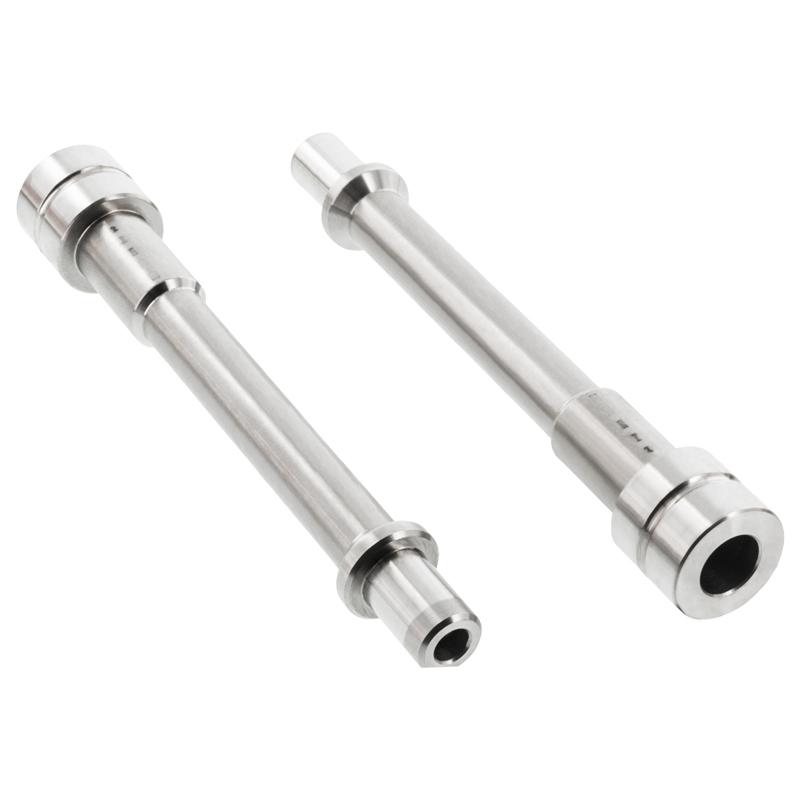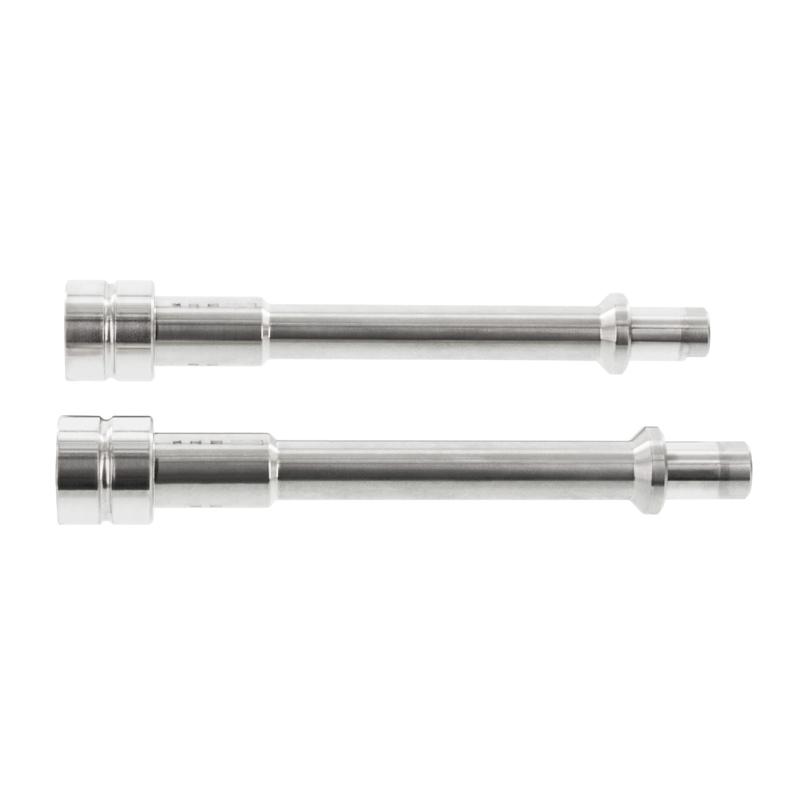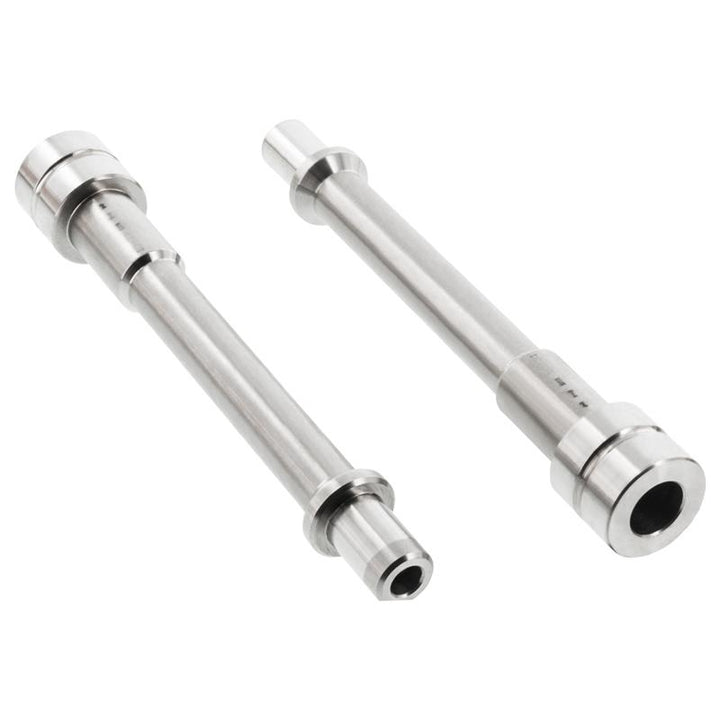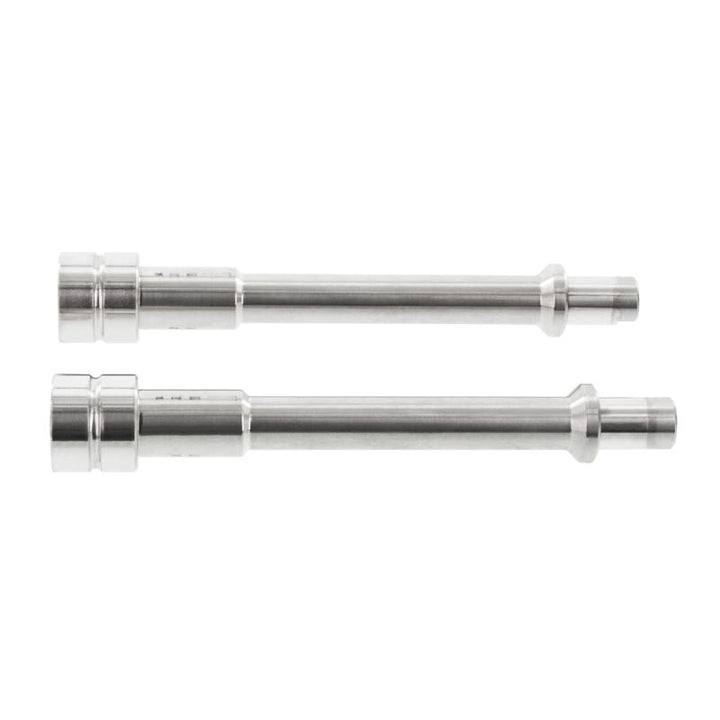For a good explanation of the function of balance shafts, read our tech article here: Engine Balance and the Balance Shafts
The best solution for building a performance motor would be to remove the balance shafts entirely. However this requires changing to an electric water pump and plugging rear oiling holes; not an easy endeavor. For most people, swapping to neutral shafts is a lot easier solution.
These shafts help you in 3 ways.
- Less vibration. As the tech article explains, the factory balance shafts cause a cancellation vibration that works against you at higher rpms. These neutral shafts eliminate the HP loss incurred from creating this vibration. They keep your engine safe at high rpm.
- Less weight. As pictured below the ZZP shafts are lighter than stock. Lighter rotating parts perform better in every way.
- Less rotating mass. Balance shafts spin at twice engine speed. HP required to spin an object rises exponentially with speed. Balance shafts on built engines can spin in excess of 16,000 rpm!
So how much HP is saved?
This is a difficult question to answer because the truth is that it depends on a variety of factors. With any neutral shaft HP is gained at higher rpm because you are not creating a counter vibration for the car. The higher the rpm, the more HP is saved and it rises exponentially.
With the ZZP shafts, HP is saved because you are not spinning as much weight. The faster you spin your engine, the more HP is saved. With our competitor’s shafts HP is lost here.
If you look at kinetic energy formulas, you get an idea of how engine speed plays a roll.
KE = 1/2 (M * (V * V))
Let’s say it takes 1/2 HP to accelerate the shafts to 2k engine rpm. It would then take 2 HP to accelerate them to 4k rpm in the same amount of time or 8 HP to spin to 8k. Every time you double the speed, it requires 4 times the horsepower to accelerate in the same amount of time. Considering these shafts are spinning twice engine speed, you can see why it’s so critical to run a light shaft.
Compare the ZZP neutral balance shaft to our competitors. Their shafts weigh 2.5 times what the ZZP shafts weigh! This is actually more than the factory shafts weigh, costing you valuable HP.
So how much weight is saved?
The ZZP shafts are 2.56 lbs lighter than the factory LE5, LNF, and LDK balance shafts.
Fits the 2.0, 2.2, and 2.4 liter engines.
More engine balance and the balance shaft info:
With any engine balance is important, especially for high rpm operation. It’s a common misconception that the balance shaft is used to balance the engine. It is not. An engine’s rotating assembly is balanced so that when the crank is spinning in a circle the weight at any one point is the same. This makes it so that no uneven forces to try and move the engine in a particular direction at any point in it’s rotation. Hence the spinning is ‘in balance’. A great example is a tire. Have you ever had tire shake or driven a car before the wheels were balanced? Same thing. These forces at high rpm turn into a vibration which literally shakes your engine apart. In a motor, you add or remove weight from the crank, make sure the rods and pistons weigh the same. You make sure that the balancer and fly wheel are both ‘in balance’. The better the balance, the higher the rpm the engine will survive at.
Consider the math. An imbalance of one ounce (the weight of a rod bolt) 1” away from center at 2,000 rpm will be subjecting a force of 7 lbs. At 4,000 rpm, the force grows to 23.5 lbs! Double the speed again to 8,000 rpm and the force becomes 114 lbs! Keep in mind, this is one 1” away from the center of rotation. The idea is to show why balance issues are negligible at low rpm but insanely important at high rpm.
The Ecotec engine has 4 cylinders, they move in pairs. Two go up while 2 go down. The design of the 4 cylinder engine lends itself to a shake at idle. This shake is not to say the engine is not balanced, it is. The shake comes at the moment the cylinders change direction. The ones moving up change direction to go down and the ones going down change direction to go up. This creates a slight shock that is felt as engine shake. As the engine speed rises, so does the frequency of this shock and it’s not felt much as it’s absorbed through the mounts and chassis. A good example of this is a subwoofer vs. a tweeter. Bass is low frequency sound and you can hear it for a long ways, it shakes your car. But no one ever complains about a neighboring cars mids or tweeters because higher frequencies do not travel as well or shake other objects. Same principal.
The balance shafts are actually out of balance rods that create a vibration. This is done on purpose to cancel out the vibration inherent to a 4 cylinder engine. Mainly they do their work at idle and low engine speeds where vibrations are felt the most. They do not keep your engine in balance; in fact they are purposely out of balance which is bad for performance. This trade off is worth it for the average consumer. The real problem comes when you want to use the engine at high engine speeds. Remember the math above about forces as they relate to rpm? It just so happens that the radius of a factory balance shaft is just over an inch but the out of balance (counter weight) is a lot more than an ounce! This translates to terrible internal engine shake and HP being used to create this vibration. For high rpm engine operation, it is essential to eliminate the factory balance shaft or run neutral shafts which can spin at any speed without causing any vibrations.
Torque spec for bolt: 50n/m or 37 ft/lbs.





